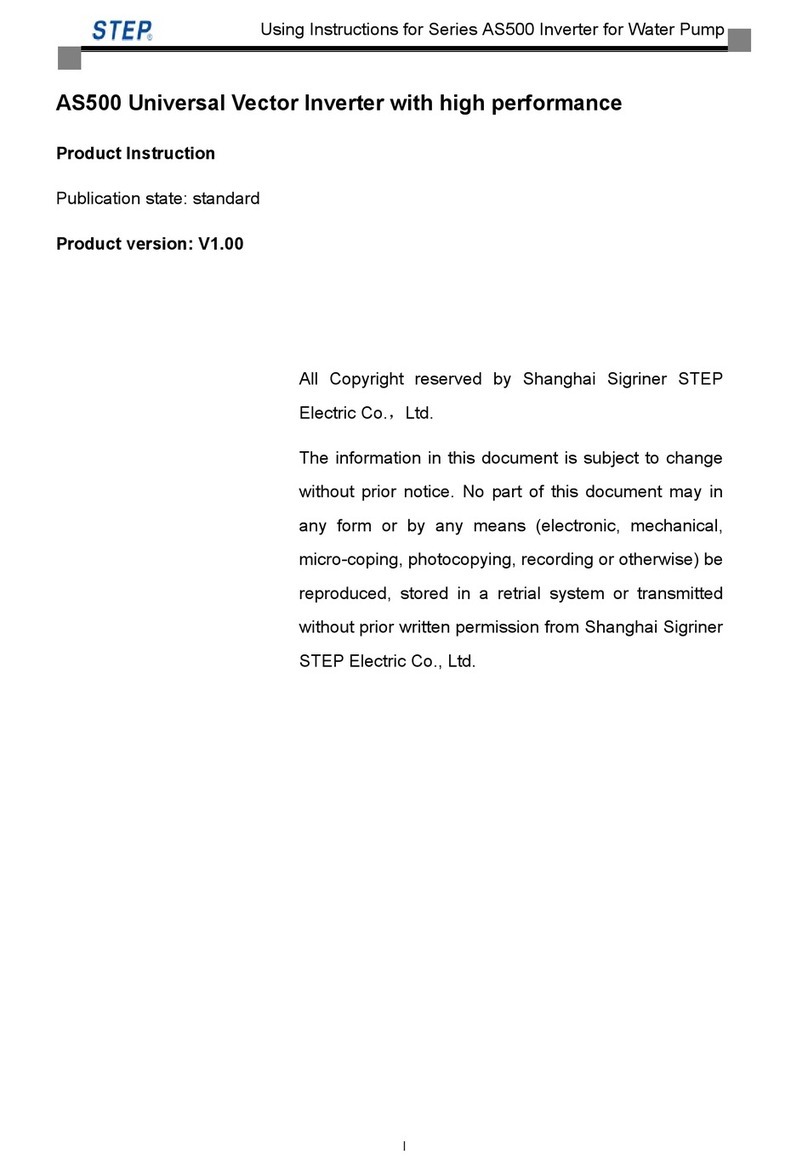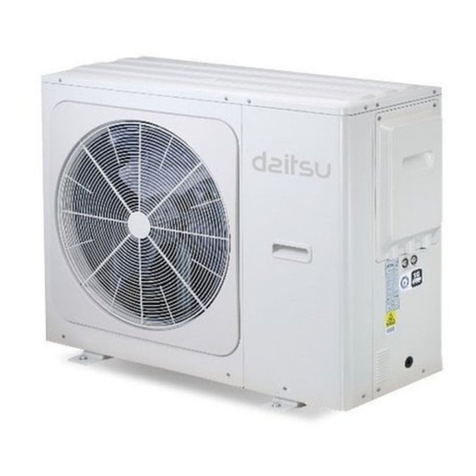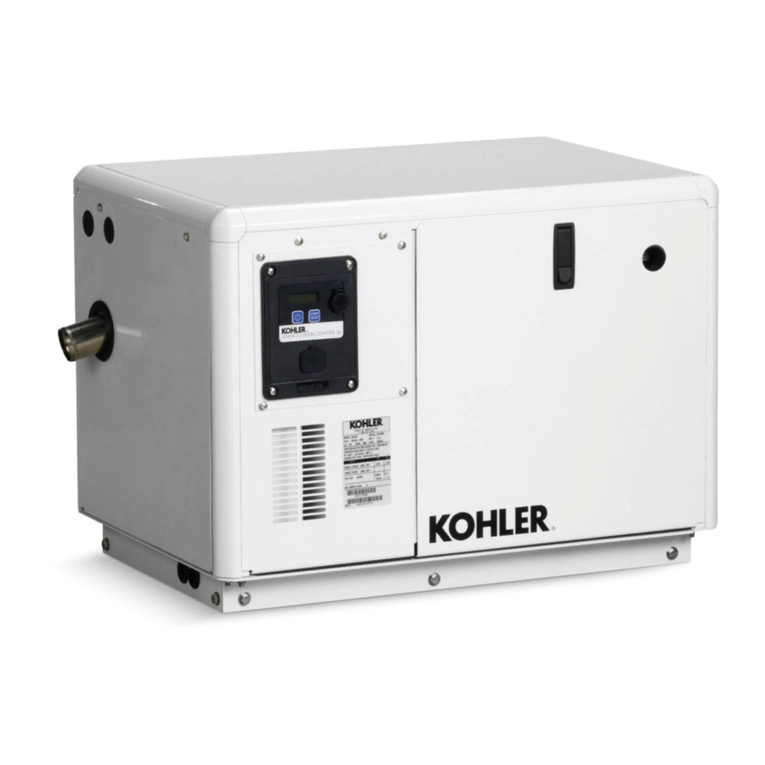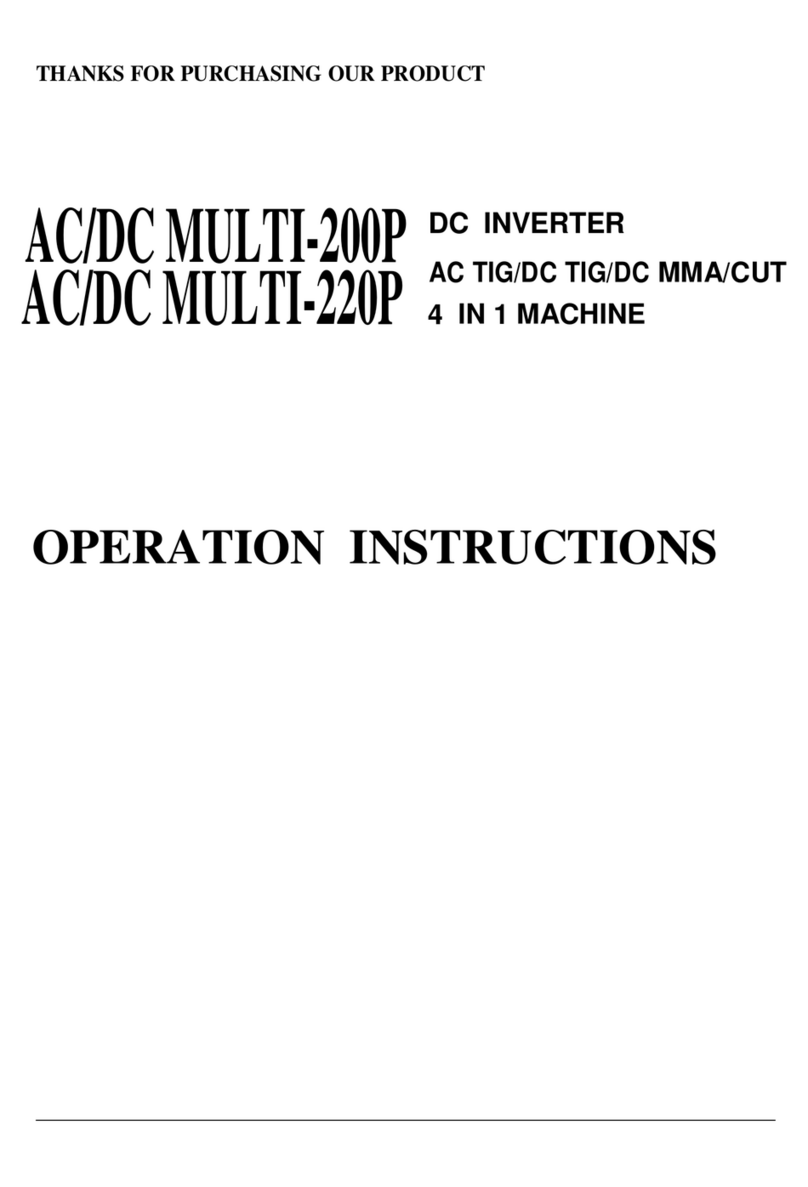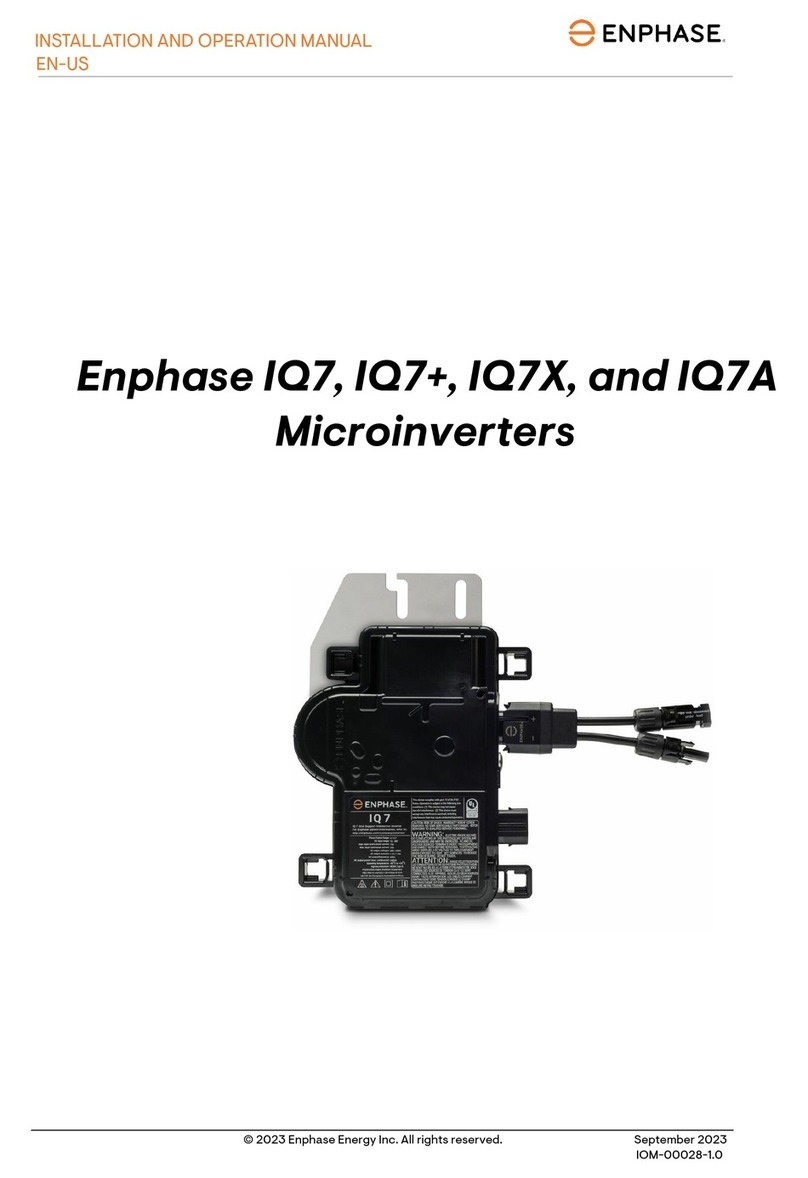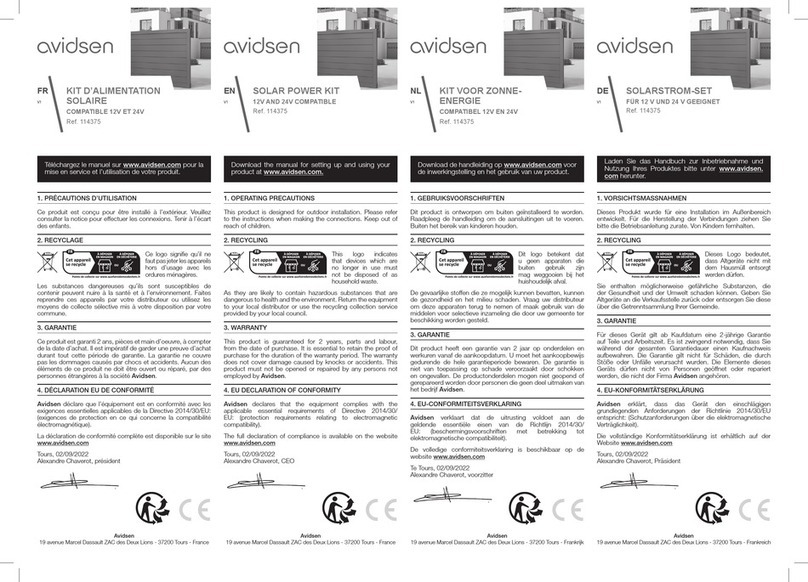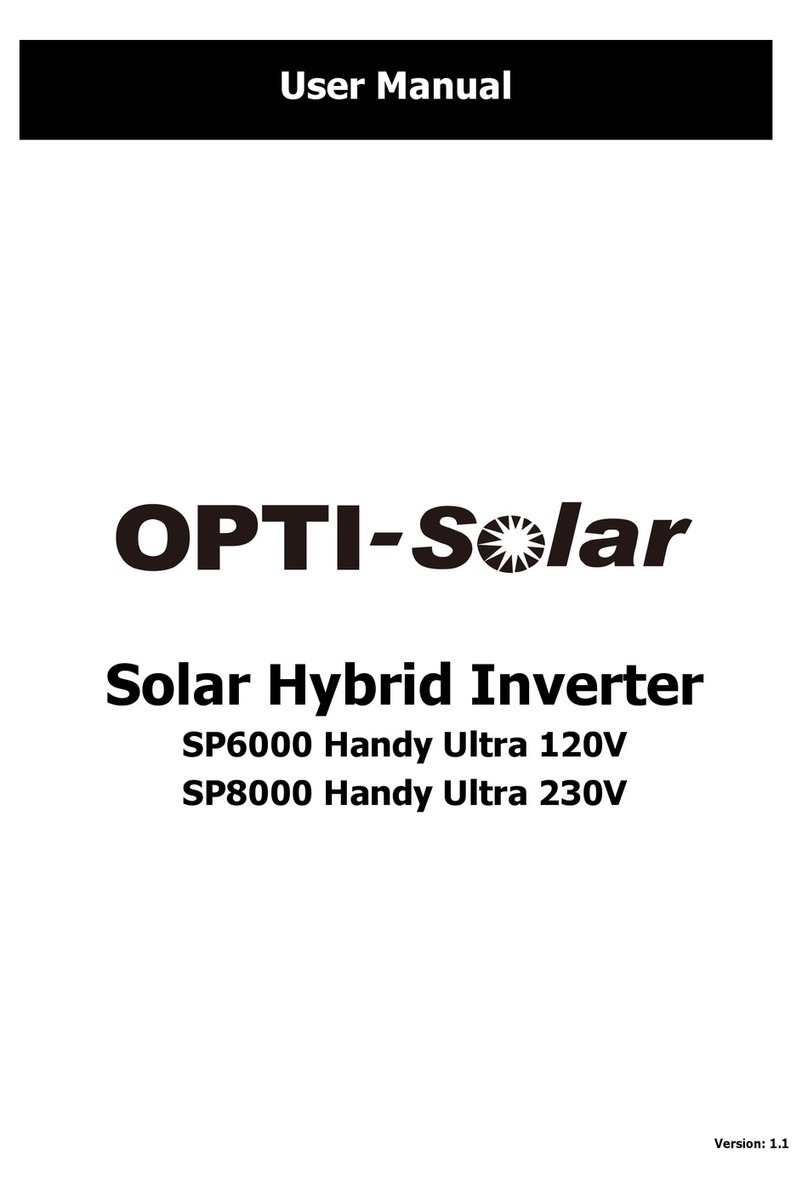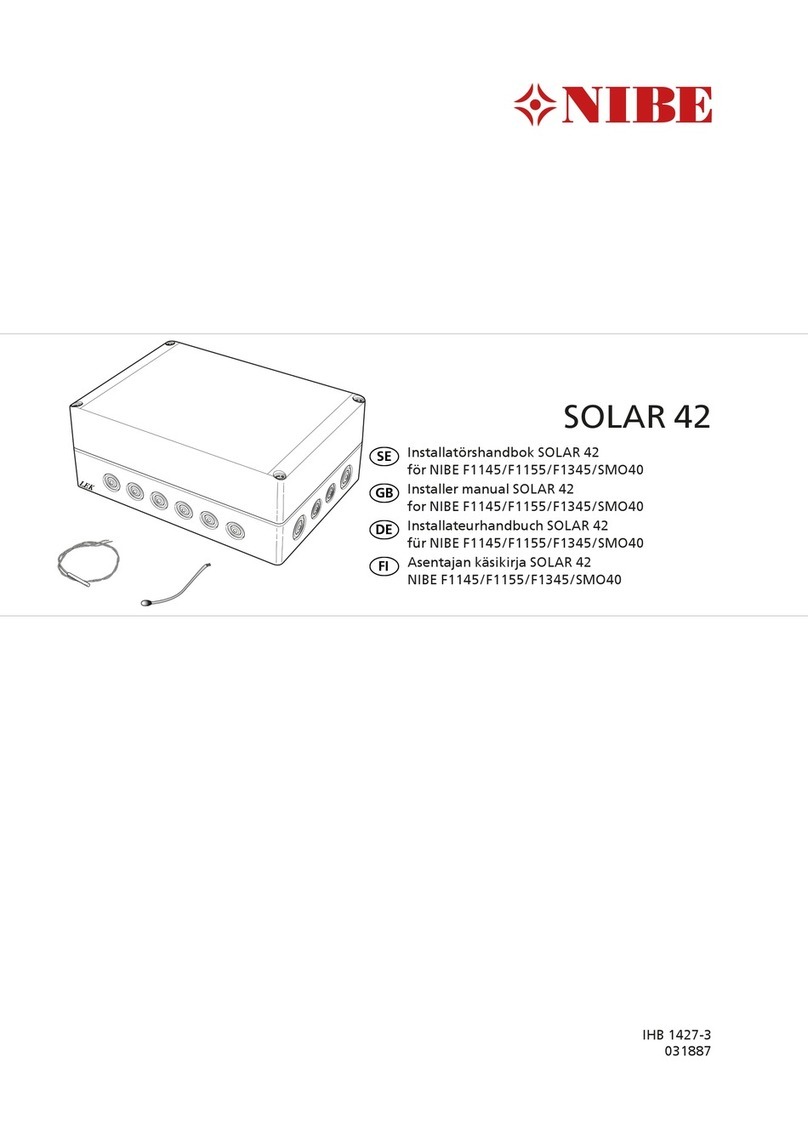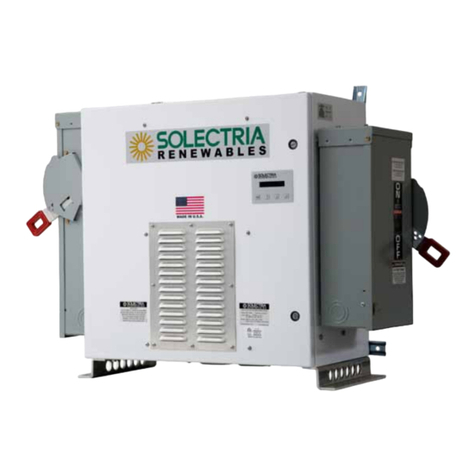Step Electric iAStar-S3 User manual



Instruction Manual of
-S3 Inverter for Elevator
-S3 Series elevator-used inverters
Publication state: standard
Product version: V6.02
AllCopyright©reservedbyShanghaiSTEP Electric
corporation
All rights reserved
The information in this document is subject to change without prior
notice. No part of this document may in any form or by any means
(electronic, mechanical, micro-coping, photocopying, recording or
otherwise) be reproduced, stored in a retrial system or transmitted
without prior written permission from Shanghai STEP Electric
corporation
.
I

Shanghai STEP Electric corporation
II
Preface
The -S3 Series of elevator-used Inverters is a new type inverter which is
researched and developed based on the carry characteristic of elevator. The 32
bit electromotor-used Digital Signal Processing (DSP), Complex Programmable
Logic Device (CPLD), Intelligent Power Module (IPM) and the digiral vector
controlled frequency-variable speed-adjustable technology are used in the
Inverter. It also combines the model characteristic of potential energy. All of them
ensure stable, comfortable and efficient running of elevator.
Outline
This instruction manual describes installation, operation, function constants
setting, maintenance and trouble-shooting of the -S3 Inverter. The
manual can be the reference for designing the elevator control system by using
the -S3 Inverter. It also can be the reference of installation,
commissioning and maintenance of elevator.
Please read the manual carefully before installing and operating the inverter.
Reader
User
Designer of elevator control system
Maintenance engineer
Technical supporter
Innovations
a) The innovative starting compensation technique without load sensors
provides an excellently comfortable starting of elevator.
b) The new PWM dead-zone compensation technique can effectively reduce
motor noise and wearing.
c) There is no need to run autotuning for asynchronous motor.
d) There is no need to lift the car during self-tuning of the phase angle of
elevator with synchronous motor.

Instruction Manual of
-S3 Inverter for Elevator
Convenient and quick commissioning method of elevator
It is important whether it is convenient for elevator commissioning after wiring.
Usually it takes operators much time and effort to set many parameters and
perform complicated procedures. This becomes very convenient by using our
inverter which is designed especially for elevator. There are only three steps for
commissioning:
1 Adjusting running direction
The correct encoder wiring and motor running direction can be easily identified
by the operator.
2 Setting parameters
a) Users may use the leave-factory configuration of motor parameters directly
identified and/or set by us, or
b) Enter the motor parameters into the inverter according to the motor
nameplate.
3 Adjusting feeling
a) The comfortable feeling may be obtained by the leave-factory values of the
parameters.
b) This may be further improved through minor adjustments of C parameters
of PID.
Note on the content
The content of this manual may have supplements or modifications. Please visit
our website for upgrade: www.stepelectric.com.
IIIIII

Shanghai STEP Electric corporation
IV
Safety Information
The following symbols with texts are used in this manual for safety-related
contents. Please comply with these regulations as they are very important.
Indicates precautions that, if not heeded, could
possibly result in loss of life or serious injury.
Indicates precautions that, if not heeded, could
possibly result in relatively serious or minor injury,
damage to the product, or faulty operation.
Indicates important information that should be
memorized.

Instruction Manual of
-S3 Inverter for Elevator
Table of contents
1OPERATION PRECAUTIONS ............................................................................................. 1
1.1 VOLTAGE CLASS AND MOTOR CAPACITY ...................................................................................... 1
1.2 CONFIRMATIONS UPON DELIVERY................................................................................................ 1
1.3 INVERTER SPECIFICATIONS ......................................................................................................... 1
1.4 INVERTER NAMEPLATE INFORMATION........................................................................................... 2
1.5 SAFETY PRECAUTIONS ............................................................................................................... 2
1.6 HANDLING NOTICE ...................................................................................................................... 4
1.6.1 Choice of Braking Resistor ................................................................................................... 4
1.6.2 Absorbing device is prohibited on the output side................................................................ 5
1.6.3 Operation Voltage of Inverter................................................................................................ 6
1.6.4 2-phase power supply is prohibited...................................................................................... 6
1.6.5 User control of output contactor ........................................................................................... 6
1.6.6 Altitude and derating operation............................................................................................. 6
1.6.7 Synchronous starpoint connection delay.............................................................................. 6
1.7 DISCARDING NOTICES ................................................................................................................ 6
1.7.1 Capacitor Disposal................................................................................................................ 6
1.7.2 Plastic Parts Disposal........................................................................................................... 6
2MODEL AND SPECIFICATION ........................................................................................... 1
2.1 INVERTER MODEL NUMBERS ....................................................................................................... 1
2.2 INVERTER TECHNICAL INDEX AND SPECIFICATION ......................................................................... 2
2.3 INSTALLATION DIMENSION AND WEIGHT OF INVERTER................................................................... 5
2.4 DIGITAL OPERATOR DIMENSIONS................................................................................................. 7
3INVERTER INSTALLATION................................................................................................. 1
3.1 INSTALLATION SITE ..................................................................................................................... 1
3.2 INSTALLATION ORIENTATION AND SPACE ...................................................................................... 2
3.3 INVERTER INSTALLATION ............................................................................................................. 3
3.4 REMOVAL AND INSTALLATION OF COVERS AND COMPONENTS OF INVERTER ................................... 3
3.4.1 Appearance and Components of Inverter............................................................................. 3
3.4.2 Removal and Installation of the Operator............................................................................. 4
3.4.3 Opening and Closing of the Terminal Cover......................................................................... 4
3.4.4 Removal and Installation of the Front Cover ........................................................................ 5
4INVERTER WIRING............................................................................................................. 1
4.1 CONNECTIONS TO PERIPHERAL DEVICES ..................................................................................... 2
Connection Diagram...................................................................................................................... 2
Wiring with peripheral devices....................................................................................................... 2
4.2 INVERTER TERMINAL WIRING ...................................................................................................... 7
4.2.1 Connection Diagram............................................................................................................. 8
4.2.2 Wiring Precautions ............................................................................................................. 10
4.3 WIRING MAIN CIRCUIT TERMINALS .............................................................................................11
4.3.1 Main Circuit Terminals .........................................................................................................11
4.3.2 Symbols and Functions of Main Circuit Terminals.............................................................. 12
4.3.3 Wire Sizes of Main Circuit .................................................................................................. 13
VV

Shanghai STEP Electric corporation
VI
4.3.4 Main Circuit Configurations ................................................................................................ 15
4.3.5 Illustration of Main Circuit Wiring ........................................................................................ 15
4.4 COUNTERMEASURES AGAINST NOISE ........................................................................................ 20
4.5 WIRING THE CONTROL CIRCUIT TERMINALS ............................................................................... 21
4.5.1 Control Circuit Terminals .................................................................................................... 21
4.5.2 Terminal Symbols of Control Circuit ................................................................................... 21
4.5.3 Control Circuit Terminal Functions...................................................................................... 22
4.5.4 Cable Specifications of Control Circuit Wiring .................................................................... 24
4.5.5 Control Circuit Terminal Wiring ...........................................................................................24
4.6 WIRING PG CARDS .................................................................................................................. 30
4.6.1 ABZ Increment PG Card for Asynchronous Motors............................................................ 30
4.6.2 SIN/COS PG Card for Synchronous Motors ...................................................................... 32
4.6.3 UVW Increment PG Card for Synchronous Motors............................................................ 35
4.6.4 Endat Absolute PG Card for Synchronous Motors ............................................................. 37
4.6.5 PG Card Terminal Wiring Precaution.................................................................................. 40
5DIGITAL OPERATOR........................................................................................................... 1
5.1 FUNCTION OF DIGITAL OPERATOR COMPONENTS ......................................................................... 1
5.1.1 LED Indicator ........................................................................................................................ 1
5.1.2 LED Digital Tube................................................................................................................... 2
5.1.3 LCD Display.......................................................................................................................... 2
5.1.4 Keyboard .............................................................................................................................. 2
5.2 OPERATION................................................................................................................................3
5.2.1 Power on and Initialization.................................................................................................... 3
5.2.2 Operation Mode.................................................................................................................... 3
5.2.3 【Run State】...................................................................................................................... 4
5.2.4 【Function Select】............................................................................................................. 6
5.2.5 【Parameter Modification】................................................................................................. 6
5.2.6 Examples of Parameter Setting............................................................................................ 7
5.3 FAULT INDICATION ...................................................................................................................... 8
5.4 CHINESE-ENGLISH COMPARISON OF PARAMETER NAMES OF THE OPERATOR ................................ 8
6FUNCTION PARAMETER LIST........................................................................................... 1
6.1 FUNCTION GROUPS.................................................................................................................... 1
6.2 FUNCTION LIST AND EXPLANATIONS ............................................................................................ 1
6.2.1 A (Advanced Menu) Parameters (R/W) ................................................................................ 1
6.2.2 B Parameters (R and R/W)................................................................................................... 7
6.2.3 C (PI Tune) Parameters (R/W) ........................................................................................... 12
6.2.4 D Parameters (R/W) ........................................................................................................... 16
6.2.5 E Parameters (Motor Parameters) (R/W)........................................................................... 19
6.2.6 F (Digital Input) Parameters (R/W) ..................................................................................... 22
6.2.7 G (Digital Output) Parameters (R/W).................................................................................. 25
6.2.8 H (Analog Input) Parameters (R/W) ................................................................................... 28
6.2.9 I (Analog Output) Parameters (R/W) .................................................................................. 30
6.2.10 J (Error Buffer) Parameters (R) ........................................................................................ 31
6.2.11 K (Function) Parameters (R/W) ........................................................................................ 33

Instruction Manual of
-S3 Inverter for Elevator
6.3 RUNNING STATUS U .....................................................................................错误!未定义书签。
7. APPLICATION OF ELEVATOR ...........................................................................................1
7.1 GENERAL................................................................................................................................... 1
7.2 SPEED CONTROL MODE ............................................................................................................. 4
7.3 WIRING BETWEEN ELEVATOR CONTROLLER AND INVERTER........................................................... 5
7.3.1 Analog Voltage Control Mode ...............................................................................................5
7.3.2 Analog Current Control Mode ...............................................................................................7
7.3.3 Multi-step Control Mode ..................................................................................................... 10
7.4 BASIC PARAMETER SETTING ..................................................................................................... 12
7.5 MOTOR AUTOTUNING................................................................................................................ 14
7.6 RUNNING DIRECTION ADJUSTMENT ........................................................................................... 16
7.7 ADJUSTMENT OF SPEED CURVE ................................................................................................ 19
7.8 ADJUSTMENT OF COMFORT....................................................................................................... 22
7.9 ADDITIONAL FUNCTIONS ........................................................................................................... 28
8. FAULT INSPECTION ........................................................................................................... 1
8.1 PROTECTIONS AND INSPECTIONS ................................................................................................ 1
8.2 WORKFLOW OF FAULT DIAGNOSIS ............................................................................................... 4
9. SERVICING AND MAINTENANCE...................................................................................... 1
9.1 GUARANTEE PERIOD .................................................................................................................. 1
9.2 PRODUCT INQUIRY ..................................................................................................................... 2
9.3 DAILY INSPECTION...................................................................................................................... 2
9.4 PERIODIC INSPECTION ................................................................................................................ 2
Appendix A Electromagnetic Compatibility .................................................................................................... 1
A.1 Noise Restraint ............................................................................................................................... 1
A.1.1 Noise Type...................................................................................................................................... 1
A.1.2 Noise Transmission ........................................................................................................................ 2
A.1.3 Basic Countermeasures for Noise Restraint................................................................................... 2
A.2 Wiring Requirements ...................................................................................................................... 3
A.2.1 Cable laying.................................................................................................................................... 3
A.2.2 Cable cross-section area ................................................................................................................ 4
A.2.3 Shielded cable ................................................................................................................................ 4
A.2.4 Installation of shielded cable........................................................................................................... 4
A.3 Grounding....................................................................................................................................... 5
A.3.1 Grounding method .......................................................................................................................... 5
A.3.2 Grounding precautions ................................................................................................................... 6
A.4 Surge Absorber installation ............................................................................................................. 6
A.5 Leakage Current and Countermeasures......................................................................................... 7
A.5.1 Leakage current to earth................................................................................................................. 7
A.5.2 Leakage current between lines....................................................................................................... 7
A.6 Restraint of Radiation from Inverter ................................................................................................ 7
A.7 Application of Filter for Power Lines ............................................................................................... 8
A.7.1 Functions ........................................................................................................................................ 9
A.7.2 Installation of Filter for Power Lines................................................................................................ 9
A.8 EMC Installation Areas ................................................................................................................... 9
VIIVII

Shanghai STEP Electric corporation
VIII
A.9 Precautions for Inverter Electric Installation..................................................................................11
A.10 EMC Standards of -S3 Inverter ..................................................................................... 12
Appendix B Lists of Function Parameters, Running Status and Faults ......................................................... 1
B.1 Function Parameter ................................................................................................................................ 1
B.2 Running Status List............................................................................................................................... 14
Appendix C Conformities of the Inverter ....................................................................................................... 1

Instruction Manual of -S3 Inverter for Elevator
1 Operation Precautions
The user who is familiar with this Inverter may skip directly to Appendix C “Operation
guide of elevator control”.
This chapter introduces general information about the inverter, including the voltage class,
the capacity of available motors, and how to check after transport. In addition, this chapter
expands the precautions of installation, layout, operation, maintenance and discarding. It is
helpful for safe application of the inverter and longer service life. Please read the chapter
carefully.
1.1 Voltage Class and Motor Capacity
The -S3 Inverter is of 200V and 400V class. The available motor power capacity
is from 2.2 to 75 kW.
O
p
eration Precautions
1.2 Confirmations upon Delivery
◎Never install an inverter that is damaged or missing components.
Doing so may result in fire and injury.
When unpacking, please confirm carefully that: whether the Inverter is damaged in any way;
whether the type and specifications on the nameplate are consistent with the order form. If
there is any type inconformity or component missing,please ediately contact the supplier.
1.3 Inverter Specifications
The -S3 Inverter specifications are shown in Figure 1.1.
Registered trade make
Series name
- S3 M 4022 A 1
Version (including special user)
Reserved for internal use
Code PG card Drive Motor
A ABZ incremen Asynchronous
motor
M SIN/COS Synchronous
motor
N UVW incremen Synchronous
motor
P Endat Synchronous
motor
Code Voltage class
2 200V
4 400V
Code Applicalbe
Motor power
002 2.2KW
003 307KW
005 5.5KW
007 7.5KW
011 11KW
015 15KW
018 18.5KW
022 22KW
030 30KW
037 37KW
045 45KW
055 55KW
075 75KW
Figure 1.1 Inverter specifications
1-1

Shanghai STEP Electric corporation
1.4 Inverter Nameplate Information
The Inverter nameplate is shown in Figure 1.2.
The nameplate includes information such as model number, specifications, lot number and
so on.
O
p
eration Precutions
Figure 1.2 Nameplate information
Shanghai Sigriner STEP Electric Co.,Ltd
No.:
SER. No.:
Numbe
r
Serial numbe
r
Model number
Applicable motor power
Input specifications
Output specifications
MODEL: -S3A4022
POWER: 22Kw
INPUT: AC380V 50/60Hz 44A
OUTPUT: AC380V 0-50Hz 48A 34kVA
1.5 Safety Precautions
◎ Attach the Inverter to a metal or other noncombustible material.
Or fire may result.
◎ Don’t attach the Inverter in an environment containing explosive gas.
Or explosion may result.
◎ Don’t place combustible material nearby.
Or fire may result.
◎ Always hold the case when carrying the Inverter.
Drop of the Inverter may cause injury of people and damage to the Inverter.
◎ The bearing capacity of the block shall be considered during installation.
Drop of the Inverter may cause injury of people and damage to the Inverter.
◎ Install the Inverter away from water splashes.
Or the Inverter may be damaged.
◎ Prevent screws, washers or metal sticks from going into the interior of the
Inverter.
Or fire may result and the Inverter may be damaged.
1-2

Instruction Manual of -S3 Inverter for Elevator
◎ Always turn off the input power supply before wiring.
Or electric shock may occur.
◎ Wiring must be performed by an authorized person qualified in electrical work.
Or electric shock may occur.
◎ Be sure to ground the protective grounding terminal E.
Or electric shock may occur.
◎ Never mix the input terminals and the output terminals of the main circuit.
O
p
eration Precautions
Or the Inverter may be damaged and an explosion may result.
◎ Never connect the terminal ○
+1/○
+2 with ○
-.
Or fire or explosion may result.
◎ The cover must be in place before turning on the power supply.
Or electric shock and explosion may occur.
◎ Never operate the Inverter with wet hands.
Or electric shock may occur.
◎ Check carefully the wiring after connecting the emergency stop circuit.
Or dangers may occur.
1-3

Shanghai STEP Electric corporation
◎ A booster shall be used to slowly bring up the voltage to the Inverter if it has
been in storage for more than two years.
Or electric shock and explosion may occur.
◎ False operations are not allowed when the Inverter is running.
Or high-voltage electric shock may occur.
◎ Never open the cover or touch the terminals shortly after cutoff of the power
supply for there is still high voltage in the Inverter.
Or high-voltage electric shock may occur.
◎ Only trained and authorized persons qualified in electrical work can perform
maintenance.
O
p
eration Precutions
Or the Inverter may be damaged or electric shock may occur.
◎ Maintenance personnel must take off watch, ring and any other metal object
before the work. They must be equipped with clothes and tools that conform to
relevant insulation requirements during the work.
Or electric shock and explosion may occur.
1.6 Handling notice
When using the -S3 Inverter, please pay attention to the following:
1.6.1 Choice of Braking Resistor
The elevator control system is running in four quadrants with potential load and negative
torques. Therefore, the choice of braking components shall be considered in order to avoid
over-current and overvoltage trip. The -S3 Inverter has built-in braking unit and only
needs an external braking resistor. Table 1.1 shows the braking resistor specifications for
200V Inverters and Table 1.2 for 400V.
Table 1.1 Braking resistors for 200V Inverters
Recommended total power(W)
Applicable
motor
output
Inverter model
-S3
Minimum
(Ω)
(
kW
)
Maximum
(Ω)
Recommended
(Ω)
Synchronous Asynchronous
2002 2.2 13 58 50 1000 1000
2003 3.7 13 39 30 1600 1000
Note: if Inverters of 5.5kW or above in the 200V series are to be used, please contact the
D&R center of STEP for the braking resistor specifications.
1-4

Instruction Manual of -S3 Inverter for Elevator
Table 1.2 Braking resistors for 400V Inverters
O
p
eration Precautions
Recommended total power(W)Inverter
model
-S3
Applicable
motor output
(kW)
Minimum
(Ω)
Maximum Recommended
(Ω) (Ω)
Synchronous Asynchronous
4002 2.2 56 210 100 1000 1000
4003 3.7 56 144 80 1600 1200
4005 5.5 56 100 70 2000 1600
4007 7.5 56 72 64 3200 2000
4011 11 34 48 40 4000 3200
4015 15 34 41 36 5000 4000
4018 18.5 17 31 24 6400 5000
4022 22 17 27 20 8000 6400
4030 30 11 20 15 10000 8000
4037 37 8 16 12 12000 10000
4045 45 5 10 9 18000 15000
4055 55 5 8 8 22000 18000
4075 75 5 6 6 30000 25000
1.6.2 Absorbing device is prohibited on the output side
Since the output of the Inverter is impulse, trip or damage to devices may occur if capacitors
for improving power factor or varistors for lightening protection are installed on the output
side. This shall be considered during design. The capacitors and varistors wired to the
existing output side of the circuit shall be removed during modernization of old elevators.
Never wire the capacitor on the output side of the Inverter circuit. This is sketched in Figure
1.3.
V
U
W
M
Figure 1.3 Never wire the capacitor on the output side of the Inverter circuit
1-5

Shanghai STEP Electric corporation
1.6.3 Operation Voltage of Inverter
The operation voltage of the -S3 Inverter shall be at its nominal level, i.e.,
220V/380V. If the power supply does not provide the appropriate voltage, a transformer
must be used.
1.6.4 2-phase power supply is prohibited
3-phase power supply may not be changed to 2-phase, or faults may occur.
1.6.5 User control of output contactor
If the output contactor is not controlled by the -S3 Inverter but by the user program,
it is recommended to pull in the contactor before sending the running command to the
Inverter and to pull it off a while after the signal output of the elevator has been stopped in
order to ensure correct operation of the contactor without current.
O
p
eration Precutions
1.6.6 Altitude and derating operation
In areas with an altitude above 1000m, thin air will lower the heat dissipation capacity of the
Inverter, and thus the Inverter shall be operated at a derated level. Figure 1.4 shows the
relationship between nominal output current and altitude.
1000 2000 3000 4000(
100%
90%
80%
流
电
current
米
)
Figure 1.4 Relationship between nominal output current and altitude
1.6.7 Synchronous starpoint connection delay
Figure 1.5 Notice on starpoint connection delay circuit
(m)
If there is a star relay, a starpoint connection delay circuit
shall be added (as shown in the figure).
1.7 Discarding Notices
The discarded Inverter shall be disposed as industrial garbage.
1.7.1 Capacitor Disposal
Explosion may occur during burning of the chemical capacitor on the main circuit or PCB.
Therefore, burning chemical capacitor is prohibited.
1.7.2 Plastic Parts Disposal
There are many plastic parts on the Inverter, the burning of which will generate poisonous
1-6

Instruction Manual of -S3 Inverter for Elevator
gases. Therefore, burning plastic parts is prohibited.
O
p
eration Precautions
1-7


Instruction Manual of -S3 Inverter for Elevator
2 Model and Specification
The following provides the model, specifications and installation dimensions of the
-S3 Inverter.
2.1 Inverter Model Numbers
The -S3 Inverter model numbers are listed in Table 2.1 for the 200V models and
Table 2.2 for the 400V.
Table 2.1 Models of 200V -S3 Inverters
Model number
-S3-
Rated capacity(kVA) Rated current output(A)
Applicable motor
output(kW)
2002 4.6 12 2.2
2003 6.9 18 3.7
Table 2.2 Models of 400V -S3 Inverters
Model number
-S3-
Rated capacity(kVA) Rated current output(A)
Model and S
p
ecification
Applicable motor
output(kW)
4002 4.7 6.2 2.2
4003 6.9 9 3.7
4005 8.5 13 5.5
4007 14 18 7.5
4011 18 27 11
4015 24 34 15
4018 29 41 18.5
4022 34 48 22
4030 50 65 30
4037 61 80 37
4045 74 97 45
4055 98 128 55
4075 130 165 75
2-1

Shanghai STEP Electric corporation
2.2 Inverter Technical Index and Specification
The -S3 Inverter technical indexes and specifications are shown in Table 2.3, Table
2.4 and Table 2.5.
Table 2.3 shows the technical indexes and specifications of 200V inverters; Table 2.4 those
of 400 V; and Table 2.5 those that are shared by the two classes.
Table 2.3 Technical indexes and specifications of 200V -S3 Inverter
Model Number: -S3 2002 2003
2.2 3.7
Rated capacity (kVA)
4.6 6.9
Rated current (A) 12 18
Rated
Output
Maximum voltage output
(V)
3-phase, 200/208/220/230/240 (corresponding to voltage input)
Phase, voltage, frequency
Model and S
p
ecification
3.7kW and below: 1- or 3-phase, 200/208/220/230/240V 50/60Hz;
5.5kW and above: 3-phase, 200/208/220/230/240V 50/60Hz
Allowed fluctuation in
voltage
-15%~+10%
Allowed fluctuation in
frequency
-5%~+5%
Power
Supply
3-phase unbalance rate ≤2%
Instantaneous low voltage
bearing
Keep running above AC 150V;
Undervoltage protection occurs when the voltage is below AC 150V and
lasts for 15 ms.
2-2
Table of contents
Other Step Electric Inverter manuals
Popular Inverter manuals by other brands

Hitachi
Hitachi J300U Series instruction manual

Growatt
Growatt 8000TL3-S Installation & operation manual

Telair
Telair TIG 3000D Use and maintenance manual and instructions for installation
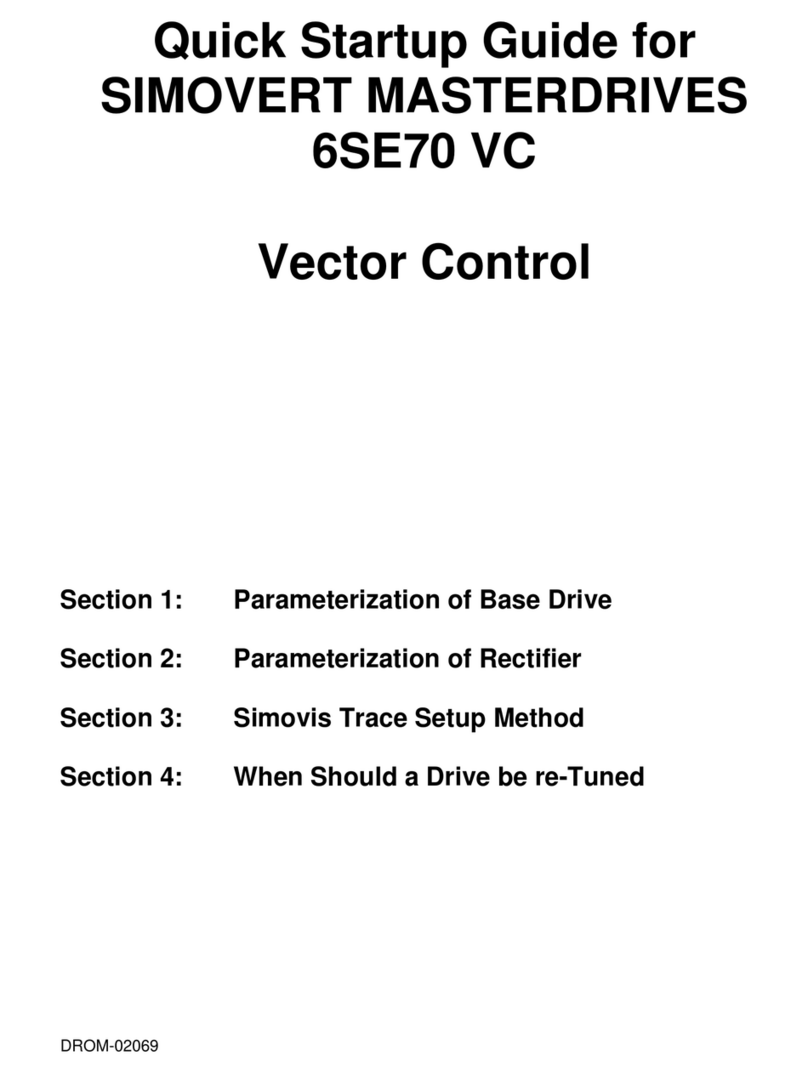
Siemens
Siemens SIMOVERT MASTERDRIVES 6SE70 VC quick start guide

Setec Power
Setec Power SET-IVS9000 Series System manual
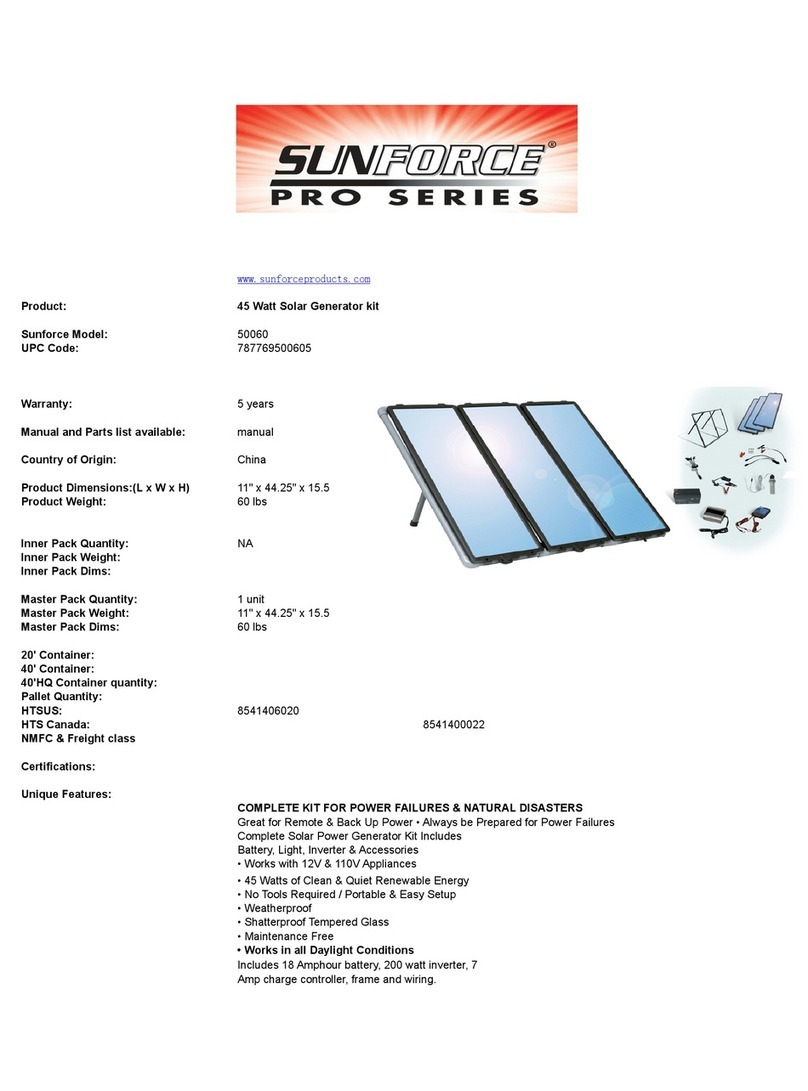
Sunforce
Sunforce Pro Series 50060 manual
